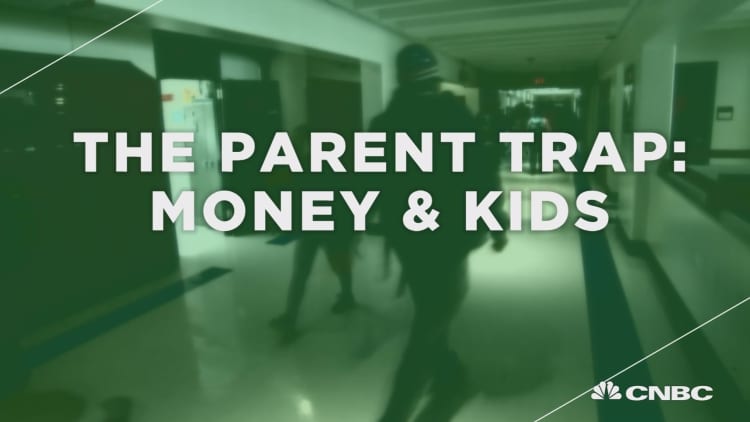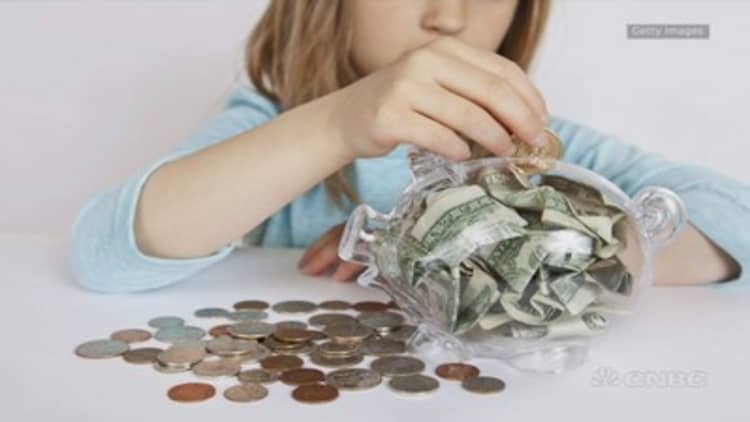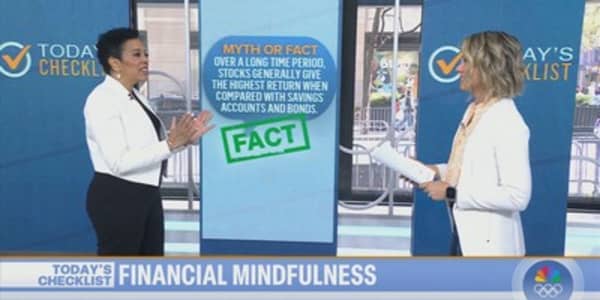
Don't underestimate the importance of the Bank of Mom and Dad when it comes to financial literacy.
That's because parents can't rely on their kids getting money lessons at school. Financial education varies dramatically from state to state. While most states now include personal finance in their K-12 standards, a January survey from the Council for Economic Education found that the number requiring a course in personal finance has held steady at 17. Twenty states require an economics course — two fewer than in 2014.
Even if you live in a state with rigorous standards, you're still the No. 1 influence when it comes to your kids' money habits. It's a subject to talk about both early and often, said Ted Beck, president and chief executive of the National Endowment for Financial Education. The group did a study with the University of Arizona and found that parental involvement is key in helping young adults avoid financial problems.
But don't mistake lesson for lecture.
"It's pretty easy to tune out," warned Beck. The best money lessons for young kids are more interactive, letting them get hands-on money experience.
"To me, financial literacy is knowledge into action," said George Barany, financial education director for America Saves.
One of the simplest things to do: Walk kids through the money decisions you make, involving them in the process when you can. There are valuable financial lessons even in everyday tasks, said J.J. Burns, a certified financial planner based in Melville, New Jersey. A trip to the grocery store, for example, can be an opportunity to cover planning, budgeting and value — in the relatively more fun guise of making a grocery list, clipping coupons and comparing unit prices.
"You're demonstrating the actions of how you go about doing this," he said.
Emphasize the advance planning and saving you have done, or are doing, for a particular purchase or goal. "It's the idea that you can't just go to the store and buy a bike for $500," Burns said. "You have to save up for it."
Let kids manage some money of their own. "An allowance can be a really useful tool, but you have to clearly define what the allowance covers," Beck said. Entrepreneurial endeavors, like yard sales and lemonade stands, can also be fun opportunities for kids to see how commerce works.
Formalize savings beyond the piggy bank. "Kids want to be shown how to do something, not just be told about it," said Barany. Help your child open an account for his or her own savings, and make regular trips to the bank to make deposits in person. Encourage goal-setting.
"People save best if they have a goal for which they save," he said.

Use cash whenever you can, Burns said. Seeing you handle money helps kids learn to identify different bills and coins, count and make change. It's also a good way to illustrate that money is a finite resource — an idea that can be tougher to grasp when you're swiping a credit or debit card.
"This is how much I have, and this is how far it can go," he said.
When your child is paying with his or her own money, resist the urge to step in and cover a purchase your child can't afford, said Beck. That undermines those good habits of saving and planning. (The exception: If you agreed in advance to match Junior's savings for that bike, or provide a set amount for a vacation souvenir.)
"If you're suddenly the ATM, the checkbook fairy, are you really reinforcing anything?" he said.







